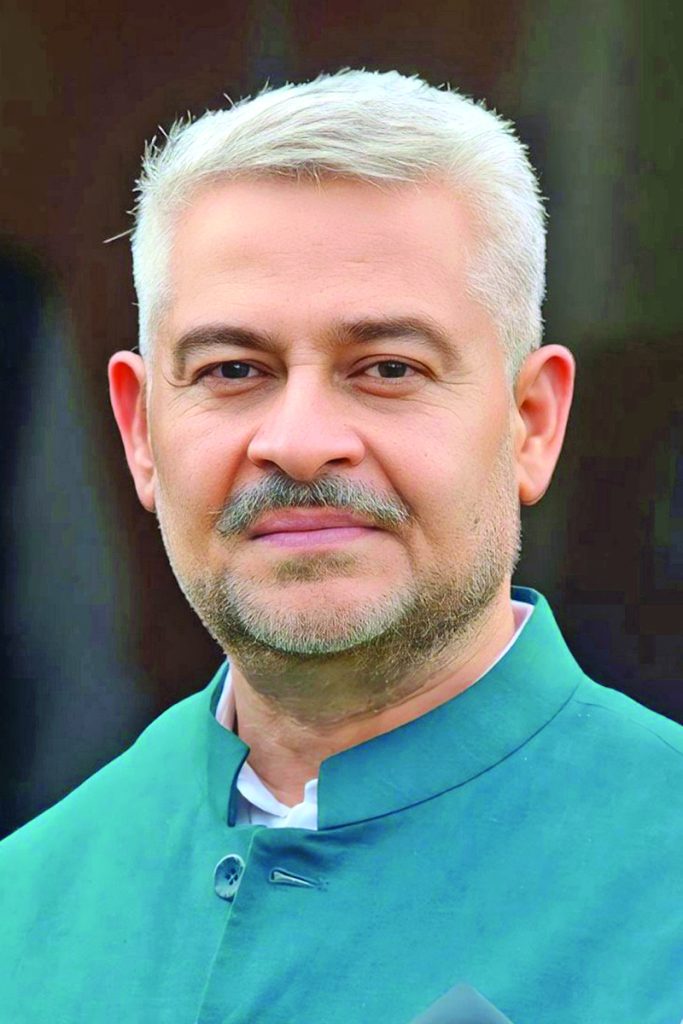NC should study delimitation history, statistics properly: Arun Gupta
STATE TIMES NEWS
JAMMU: BJP Spokesperson Arun Gupta on Tuesday said that delimitation was done in an unfair manner decades ago when the constituencies for Constituent Assembly in Jammu and Kashmir were created in 1951.
“This had resulted into far more seats being created in Kashmir as compared to Jammu”, Arun Gupta said while responding to Chief Minister Omar Abdullah’s comments regarding the delimitation that happened in 2022.

The CM had insinuated that the delimitation was done in a manner to allot more seats to Jammu than Kashmir. This had been done to disempower the National Conference (NC), he had hinted. Similar thoughts have been articulated by several other Kashmiri politicians, he said.
The facts were contrary to the narratives sought to be created by the CM, Mr Gupta said. The 37 assembly segments in the Jammu region were divided unequally between the two Lok Sabha seats in the region. The Jammu Lok Sabha seat had 20 assembly segments and over 20 lakh voters in 2019 Lok Sabha elections. The Udhampur Lok Sabha seat had 17 assembly segments and over 16.50 lakh voters in 2019 Lok Sabha elections, he pointed out.
After the delimitation of 2022, all the five Lok Sabha seats in the Union Territory (UT) have 18 assembly segments each. This could become possible only by increasing the number of assembly segments to 90 and distributing them evenly under each Lok Sabha seat, Mr Gupta added.
In the assembly elections a month ago, the Srinagar district had a total of 7,74,462 voters. It had a total of eight assembly segments and the average voter per segment comes to 96,808 voters. The Eidgarh assembly segment was the smallest, voter-wise, and had only 61,885 voters.
In Jammu district, there were a total of 12,00,977 voters and it has 11 assembly segments. The average voter per assembly segment in Jammu is 109,180. The smallest assembly constituency in Jammu district is Marh which has 93,598 voters.
The Jammu district thus had 1,09,180-96,808, 12,372 voters more than the average for a Srinagar constituency. Since Jammu had 11 assembly segments, the total additional voters in the district, as compared to Srinagar district, thus come to 1,36,092 voters. Two assembly constituencies like Eidgah thus need to be created in the Jammu district alone, he said.
If Jammu and Srinagar district are treated fair and square, equally and equitably, far more assembly segments will have to be created in the entire Jammu region, Mr Gupta added.
In fact, other nine districts of the Kashmir valley too deserved more assembly seats than they have presently. The data about all the districts pertaining to the assembly segments was released in the public domain during the elections. According to this data, in Baramullah district, there were 7,22,923 voters in all. With seven assembly segments, the average voter per constituency comes to 1,03,275. This is more than 96,808 voters per constituency for Srinagar district, which is much more developed.
In Kulgam district, there were a total of 3,28,740 voters and there were three constituencies. The average per assembly segment thus comes to 1,09,580. In Shopian district, there were a total of 2,09,039 voters and two assembly segments of Zainapora and Shopian. The average per assembly constituency in Shopian is thus 1,04,520 voters.
The NC founder, Sheikh Abduallah, had created assembly segments in such a manner that they were very small in its own strongholds, the central Kashmir. The south Kashmir areas as also the north Kashmir areas, were treated unfairly in allocation of assembly seats, Mr Gupta argued.
In the next delimitation exercise, the distribution of voters across the assembly and Lok Sabha segments across Jammu & Kashmir will hopefully be able to remove these angularities. A more equal and equitable distribution of voters will then be able to address the anomalies, he concluded.
